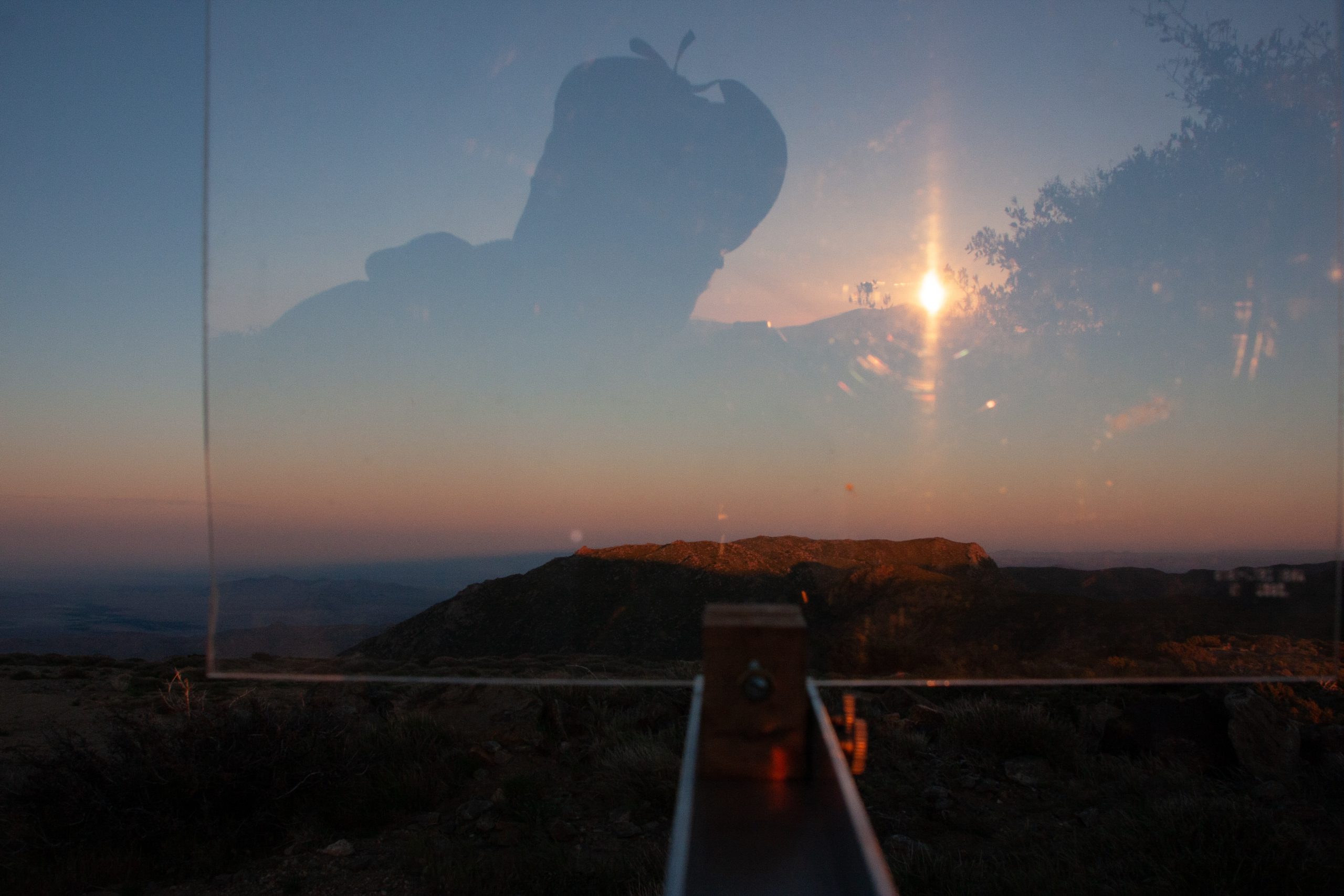Selenehelion: imaging the Sun & full Moon at the same time with one camera
2024 June 9
Direct, simultaneous imaging of the full Moon rising as the Sun was setting proves that both objects can be seen concurrently. The onset of a total lunar eclipse provided the opportunity to capture this event near its most extreme possible separation.
Introduction
In the past, observers questioned whether the Sun and Moon can both be seen at the same time above the horizon at full Moon. We have been investigating this question for several years and have now demonstrated that the answer is a qualified yes. An apparatus developed to permit the simultaneous imaging of events diametrically opposite each other in the sky captured images of the Sun and full Moon simultaneously above their respective horizons with a separation of 179.5°.

Rise, set, and eclipse geometry
It is important to understand the geometry and coordinate system involved in describing full Moon and lunar eclipses. The definition of ‘full Moon’ places the Moon’s celestial longitude 180° from the Sun’s celestial longitude. Celestial longitude is measured along the ecliptic, the apparent path of the Sun across the sky over the course of a year. Celestial latitude is measured north or south, up to 90°, from the ecliptic. Celestial latitude and longitude are different from the equatorial coordinate system based on the projection of Earth’s equator onto the sky.
The Moon is 180° in celestial longitude from the Sun every ‘moonth’. But because the plane of the Moon’s orbit is tilted with respect to the ecliptic (and also with respect to Earth’s equatorial plane), it is also, usually, out of the plane of the ecliptic so its actual angular distance from the Sun is a few degrees less than 180°. Only during a ‘perfect full Moon’ will the Moon be exactly 180° from the Sun, centre to centre. Most recently, during the total lunar eclipse on 2000 Jul 16, the centre of the Moon’s disk missed diametric opposition, marked by the center of Earth’s shadow, by only a small fraction of a degree. A similar syzygy will occur on 2029 Jun 26 with South America favoured with a full view of the event. Similar near misses occur in 2049 and 2076.
For two stars 180° apart viewed from an airless, perfectly spherical planet, one would only see both up at the same time if the observer’s height above the surface depresses the apparent horizon. In the case of an airless, flat horizon on Earth, one would see half of each of the Sun and the perfect full Moon at the same angular separation (measured centre to centre). With air, refraction can raise both the Sun and Moon above the airless horizon and above a sea level horizon. Being on a mountain or in an aircraft depresses the horizon even more.
Perfect full Moons are infrequent, but total lunar eclipse full Moons come close to perfection for the requirements of this research. In an eclipse syzygy (alignment of the Sun, Earth, and Moon), the Moon is in Earth’s shadow and too faint to be seen near the bright horizon opposite sunrise or sunset. An observer looking through the thick atmosphere near the horizon would have a very hard time seeing the poorly illuminated Moon deep in Earth’s shadow. This combination makes the Moon effectively invisible with the Sun above the horizon.
Members can view the full illustrated article in PDF format by returning to the previous page. Not a member? Why not join today?
| The British Astronomical Association supports amateur astronomers around the UK and the rest of the world. Find out more about the BAA or join us. |
